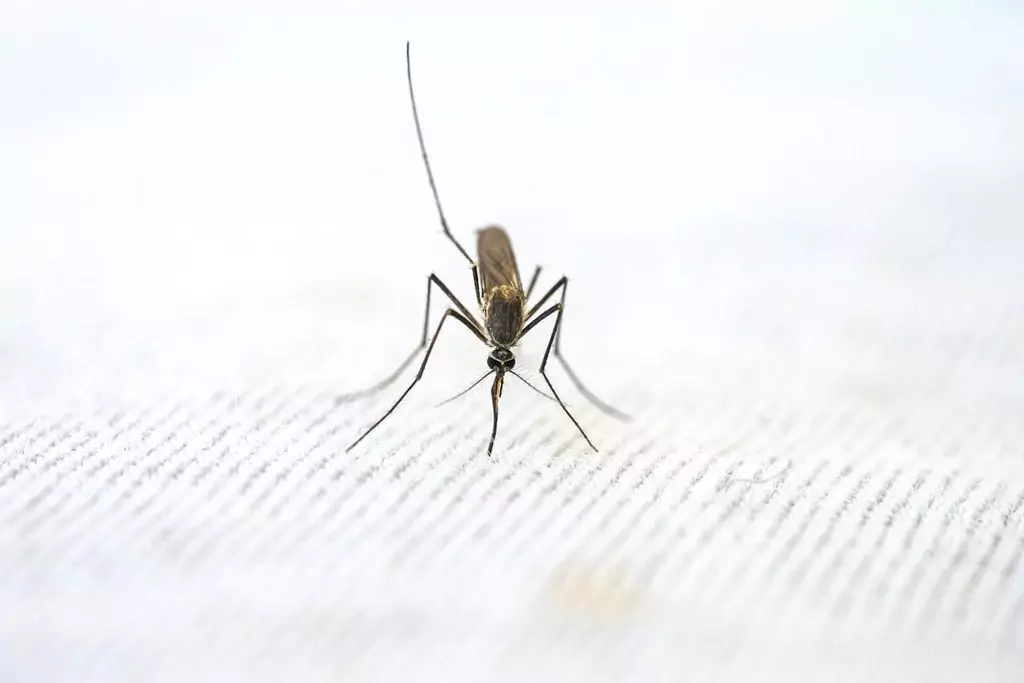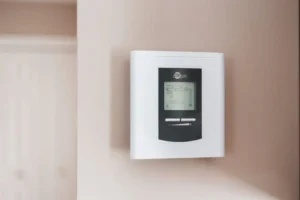Now Reading: Can Air Conditioning at Home Trigger Asthma?
- 01
Can Air Conditioning at Home Trigger Asthma?
- Home
- Home Appliances
- Can Air Conditioning at Home Trigger Asthma?
Can Air Conditioning at Home Trigger Asthma?
![]() Anne MaddisonHome Appliances, Climate ControlAugust 23, 202556 Views
Anne MaddisonHome Appliances, Climate ControlAugust 23, 202556 Views

Did you know that more than 25 million Americans live with asthma? For many of them, summer brings a tough question: is air conditioning helping or making things worse? The relationship between air conditioning and asthma isn’t black and white. Sometimes your AC can be your best friend for managing symptoms, and other times it might actually trigger an attack.
I know how frustrating this can be. You want to stay cool and comfortable in your own home, but you also want to breathe easily. The good news is that with the right knowledge and a few smart adjustments, you can enjoy the benefits of air conditioning without putting your respiratory health at risk.
In this guide, we’ll dive deep into how air conditioning affects asthma, what specific problems to watch out for, and most importantly, how to create a cooling environment that actually helps your breathing instead of hindering it. Whether you’re a longtime asthma sufferer or someone who’s recently noticed breathing issues around your AC, this information will help you make informed decisions about your home comfort system.
Understanding How Air Conditioning Systems Can Trigger Asthma
Let’s start with the basics. Asthma is essentially your airways overreacting to certain triggers, causing them to swell, produce extra mucus, and make breathing difficult. While everyone’s triggers are different, there are several ways your air conditioning system might be setting off your symptoms.
Sudden Temperature Changes
The most common culprit is temperature shock. Think about walking from a hot parking lot into a freezing cold grocery store. That sudden temperature change can literally take your breath away, and for people with asthma, it can trigger a full-blown attack. A sudden shift in temperature from warm to cold can trigger an asthma attack by causing your airways to constrict rapidly.
Poor Ventilation
Poor ventilation and air circulation create their own set of problems. If your system isn’t properly balanced or if your ductwork has leaks, you might not be getting adequate fresh air circulation. This can lead to a buildup of indoor pollutants, including volatile organic compounds (VOCs) from household products, cooking odors, and other irritants that can trigger asthma.
The Role of Humidity
Humidity changes also play a major role. Your AC doesn’t just cool the air; it also removes moisture from it. While this can be beneficial in very humid climates, overly dry air can irritate sensitive airways and make asthma symptoms worse. On the flip side, if your system isn’t removing enough humidity, you might end up with the opposite problem. Warm and humid weather, especially when humidity exceeds 50%, is also linked to increases in asthma symptoms.
Dirty Filters and Ducts
Another factor many people don’t consider is how AC systems circulate air throughout your home. If your ductwork or filters are dirty, your air conditioner might be efficiently spreading allergens, dust, and other irritants to every room. Instead of cleaning your air, it’s actually making it worse.
Wrong Filter Type
One problem that’s becoming more common is using the wrong type of filter for your specific needs. Many standard filters are designed to protect your HVAC equipment, not necessarily to improve your indoor air quality. If you have asthma, you likely need a higher-efficiency filter, but you also need to make sure your system can handle the increased airflow resistance that comes with better filtration.
Chemical Irritants
Chemical exposure is another potential trigger that’s often overlooked. Refrigerant leaks, cleaning products used on the system, or even the materials used in ductwork can introduce irritants into your air supply. For people with sensitive airways, even small amounts of these chemicals can be enough to trigger symptoms.
The key thing to understand is that these problems aren’t inevitable. Most AC-related asthma triggers can be prevented or minimized with proper system design, maintenance, and operation. The system itself isn’t inherently bad for asthma; it’s usually how it’s maintained and used that makes the difference.
Mold Growth
Mold growth is another serious concern that many homeowners don’t realize they have. Your AC system naturally produces condensation, and if that moisture doesn’t drain properly or if humidity levels stay too high, mold can start growing in your ductwork, on your evaporator coil, or around your unit. Continuous running of the HVAC system triggers the growth of mold on surfaces, especially in areas where moisture accumulates.
Here’s what makes mold particularly problematic for asthma sufferers: even if you can’t see or smell it, mold spores can get distributed throughout your home every time your system runs. These microscopic particles are potent asthma triggers for many people, and they can cause symptoms even in very small concentrations.
Bacterial Contamination
Bacterial contamination in water drainage systems is another issue that flies under the radar. The condensate drain pan and drainage lines in your AC system can become breeding grounds for bacteria if they’re not properly maintained. When these bacteria get stirred up and circulated through your air supply, they can cause respiratory irritation and trigger asthma symptoms.
Lack of Maintenance
Inadequate maintenance is really the root cause of most of these problems. Dust buildup on coils and in ductwork, worn-out gaskets that allow contaminated air to enter the system, and aging components that don’t work efficiently all contribute to poor indoor air quality.
The good news about all these problems is that they’re preventable and fixable. Once you know what to look for, you can take steps to address these issues before they start affecting your breathing.
Curious which refrigerant offers the best mix of efficiency, cost, and eco-safety? Discover your top choice in our guide on which home air conditioner refrigerant is best.
When Air Conditioning Helps vs Hurts Asthma Management
Here’s where things get interesting. Air conditioning isn’t inherently good or bad for asthma – it all depends on how it’s designed, maintained, and operated. Let me break down when your AC is your friend and when it might be working against you.
How Temperature Control Supports Asthma Relief
On the positive side, air conditioning can be incredibly beneficial for asthma management when it’s working properly. Temperature control is probably the most obvious benefit. By maintaining a consistent, comfortable temperature in your home, you can avoid the temperature fluctuations that often trigger asthma symptoms. This is especially important during extreme weather when outdoor temperatures would otherwise force you to open windows and let in pollen, pollution, and other outdoor irritants.
When it comes to operational best practices, gradual temperature adjustments are key. Instead of setting your thermostat to 68°F when you come home to a 95°F house, try setting it to 75 first and then gradually lowering it over the course of an hour. This prevents the temperature shock that can trigger symptoms.
Why Humidity Balance Matters for Breathing
Humidity control is another major advantage. In humid climates, AC systems help maintain indoor humidity levels that are much more comfortable for people with asthma. Most experts recommend keeping indoor humidity between 30-50% for optimal respiratory health, and a well-functioning AC system can help you stay in that range. If your area is very humid, you might need to run your AC in longer cycles or add a supplemental dehumidifier to maintain these levels consistently.
Keeping Pollutants and Pollen Outside
Perhaps most importantly, air conditioning helps people with asthma because doors and windows are kept shut, which helps keep pollens and other outdoor irritants out. During high pollen seasons or when air quality is poor due to wildfires or pollution, being able to seal up your home and rely on filtered, conditioned air can be a literal lifesaver.
The Role of Air Filtration in Asthma Management
Filter maintenance is absolutely critical, and it’s probably the most important thing you can do. When your AC system is equipped with proper filters and they’re regularly maintained, your system can actually clean the air as it cools it. This removes many common asthma triggers from your indoor environment, including dust mites, pet dander, pollen, and other airborne particles.
Air conditioning can be good for asthma as it helps regulate temperature and humidity, but if not properly maintained, it can worsen indoor air quality. Using cheap, low-efficiency filters might protect your equipment, but it won’t do much to improve your air quality.
When it comes to filter selection, this is where you can really make a difference. Look for filters with a Minimum Efficiency Reporting Value (MERV) rating between 8-13. Higher ratings mean better filtration, but make sure your system can handle the increased airflow resistance.
High Efficiency Particulate Air (HEPA) filters deserve special mention because research strongly supports their effectiveness. Among patients with allergies and asthma, use of air filters is associated with fewer symptoms. While true HEPA filters might be too restrictive for some residential HVAC systems, there are many high-efficiency alternatives that provide similar benefits.
For people with asthma, I recommend changing filters monthly during peak usage seasons, even if the manufacturer suggests they last longer. This might seem excessive, but clean filters are your first line of defense against airborne triggers.
Integration with air purifiers can provide an extra layer of protection. Portable air purifiers with HEPA filters in bedrooms or main living areas can supplement your HVAC system’s filtration, especially during high pollen seasons or when outdoor air quality is poor.
Better Sleep in a Controlled Environment
Temperature-controlled environments also tend to promote better sleep quality. Since asthma symptoms often worsen at night, having a cool, comfortable bedroom with clean air can help you sleep more soundly and wake up feeling better.
How Poor Maintenance Turns Benefits Into Risks
But here’s where things can go wrong. Poor maintenance practices can turn all these benefits into drawbacks. A system with dirty filters, moldy ductwork, or bacterial contamination can actually make your indoor air quality worse than if you had no AC at all.
Professional ductwork cleaning should be done every 3-5 years, or more frequently if you have pets, live in a dusty area, or have had water damage. This removes accumulated dust, debris, and potential mold growth that regular filter changes can’t address.
Condensate drain maintenance is something many people overlook, but it’s crucial for preventing mold and bacterial growth. Your drain line should be cleaned and treated annually to prevent clogs and contamination. Some HVAC professionals recommend adding algae tablets to the drain pan to prevent growth, but make sure these are safe for people with respiratory sensitivities.
UV light installation is becoming increasingly popular, and for good reason. UV-C lights installed in your ductwork or near your evaporator coil can kill mold, bacteria, and other microorganisms before they get circulated through your home. This is particularly beneficial for people with asthma who are sensitive to biological contaminants.
Regular system inspections by a qualified HVAC professional can catch problems before they affect your indoor air quality. During these inspections, technicians should check for leaks, clean coils, inspect ductwork, and ensure your system is operating efficiently.
Air circulation patterns matter too. Make sure your vents aren’t blocked by furniture or curtains, and consider using ceiling fans to help distribute conditioned air more evenly. This can help you maintain comfort at slightly higher temperatures, reducing energy costs while maintaining good air quality.
Problems with Extreme Temperature Settings
Incorrect temperature settings can also be problematic. Setting your thermostat too low and creating a dramatic temperature difference between indoors and outdoors can trigger symptoms when you move between environments. I’ve seen people set their AC to 65°F when it’s 95°F outside, and then wonder why they have breathing problems every time they come inside.
Over-Reliance Without Fixing Root Causes
Over-reliance without addressing root causes can also be problematic. Some people use their AC as a band-aid solution while ignoring other important aspects of asthma management like removing allergen sources, maintaining proper humidity levels throughout the home, or addressing outdoor air quality issues.
Balancing Energy Efficiency and Health Needs
The balance between energy efficiency and health considerations is something many people struggle with. More efficient systems often run less frequently, which can lead to greater humidity and temperature swings. While this saves energy, it might not provide the consistent environment that’s best for asthma management.
Zoning strategies can be particularly helpful for families where not everyone has asthma. You can maintain more stringent temperature and humidity control in bedrooms and main living areas while being more flexible in less-used spaces.
Conclusion
The question “can aircon trigger asthma” doesn’t have a simple yes or no answer, but I hope this guide has helped you understand that the real answer is much more empowering: it depends on how you use and maintain your system.
Here’s what we’ve learned: air conditioning can absolutely trigger asthma symptoms, but it can also be one of your most powerful tools for managing them. The difference lies in understanding your specific triggers, maintaining your system properly, and making smart choices about filters, settings, and operation practices.
The most important takeaway is that maintenance truly is everything. A well-maintained AC system with proper filtration can create an environment that’s significantly better for your respiratory health than relying on natural ventilation alone. But a poorly maintained system can make your symptoms worse than if you had no air conditioning at all.
Remember that small changes can make a big difference. Something as simple as upgrading to a higher-quality filter and changing it monthly can dramatically improve your indoor air quality. Gradually adjusting temperatures instead of making dramatic changes can prevent temperature shock triggers. Keeping humidity levels in the optimal range can reduce multiple asthma triggers simultaneously.
Your next steps should be tailored to your specific situation. Start by assessing your current AC system. When were the filters last changed? When was it last professionally serviced? Are you experiencing symptoms that seem related to your AC use? Consider consulting with both your healthcare provider and an HVAC professional who understands indoor air quality.
Most importantly, don’t let fear of potential asthma triggers prevent you from staying comfortable in your own home. With the right knowledge and approach, you can create a cooling environment that supports your respiratory health rather than compromising it. Your lungs and your comfort don’t have to be at odds – they can work together to help you breathe easier and live more comfortably.
Wondering if your air conditioner could help keep mosquitoes at bay? Find out the surprising truth in our article on whether an air conditioner keeps mosquitoes away at home.
Related Posts
Previous Post
Next Post
Home AppliancesJuly 28, 2025
Can Air Conditioner Make You Sick?
Climate ControlJuly 27, 2025
What Air Conditioner Size Do I Need?
Climate ControlAugust 24, 2025
Are Home Air Conditioner Tune Ups Necessary
Climate ControlAugust 23, 2025
Can Air Conditioning at Home Trigger Asthma?
- 03
Climate ControlJuly 28, 2025
Can Air Conditioner Make You Sick?
- 04
Climate ControlJuly 27, 2025
What Air Conditioner Size Do I Need?





















